- There are no more items in your cart
- Shipping Calculated at checkout
- Sub-Total (inc. VAT) £0.00
Sikaflex 403 Tank and Silo is a 1-part, moisture curing, polyurethane elastic tank and silo sealant.
- Designed for sealing steel containers built in sections such as enamelled steel or stainless steel tanks
- Resistant to domestic and municipal sewage, liquid manure and silage liquid
- Good mechanical resistance
- Very good resistance to specific chemicals
- Very good tear propagation resistance
- High modulus of elasticity
- Movement capability of ± 20 % (ISO 9047)
Professional use only - from the 24th August 2023, adequate training is required before industrial or professional use of this product.
Should you require training, visit - https://www.safeusediisocyanates.eu/
Professional use only - from the 24th August 2023, adequate training is required before industrial or professional use of this product.
Should you require training, visit - https://www.safeusediisocyanates.eu/
Sikaflex 403 Tank & Silo is a 1-part, moisture curing, elastic sealant. It is designed for sealing steel containers built in sections such as enamelled steel or stainless steel tanks. The Product is resistant to liquid manure, silage liquids and is suitable for sealing domestic and municipal sewage systems
Uses:
- Sealing segmented or bolted steel tanks including wall to floor connection joints
- Tanks for the anaerobic digestion process including Biogas tanks
- Liquid manure tanks
- Drive-in silos for agricultural use
- Agricultural stables
- Silage clamp retaining walls
- Domestic and municipal sewage treatment plants including waste water
- Floor joints where very high chemical resistance is required
Quick Links - Click To Jump To Section:
Features & Benefits
- 1-part, moisture curing, polyurethane elastic tank and silo sealant
- Designed for sealing steel containers built in sections such as enamelled steel or stainless steel tanks
- Resistant to domestic and municipal sewage, liquid manure and silage liquid
- Good mechanical resistance
- Very good resistance to specific chemicals
- Very good tear propagation resistance
- High modulus of elasticity
- Movement capability of ± 20 % (ISO 9047)
Surface Preparation
The substrate must be sound, clean, dry and free of all contaminants such as dirt, oil, grease, cement laitance, old sealants and poorly bonded coatings which could affect adhesion of the sealant. The substrate must be of sufficient strength to cope with the stresses induced by the sealant during movement.
- Use techniques such as wire brushing, grinding, grit blasting or other suitable mechanical tools to remove all weak substrate material
- Repair all damaged joint edges with suitable Sika repair products
- Completely remove all dust, loose and friable material from all surfaces before application of any activators, primers or sealant
- Where joints in the substrate are saw-cut, flush away all slurry material and allow joint surfaces to dry
For optimum adhesion, joint durability and critical, high performance applications such as joints on multistorey buildings, highly stressed joints or extreme weather exposure, use the following priming and pretreatment procedures:
Non-Porous Substrates
Enamelled steel, aluminium, anodised aluminium, stainless steel, galvanised steel, powder coated metals or glazed tiles:
- Clean and pre-treat using Sika Aktivator-205 applied with a clean cloth or Sika Primer 3N applied with a brush
Consult the tank manufacturer's instructions for their specific preparation and priming recommendations.
Other metals, such as copper, brass and titanium-zinc:
- Clean and pre-treat using Sika Aktivator-205 with a clean cloth
- Wait until the flash off time has been achieved
- Apply Sika Primer-3 N or Sika Primer 115 by brush
PVC Substrates:
- Clean and pre-treat using Sika Primer-215 applied with a brush
Porous Substrates:
Concrete, aerated concrete and cement-based renders, mortars and bricks:
- Prime surface using Sika Primer-3 N applied by brush
For more details of the primer or pre-treatment products refer to the individual Product Data Sheet.
Note: Primers and activators are adhesion promoters and not an alternative to improve poor preparation / cleaning of the joint surface. Primers also improve the long term adhesion performance of the sealed joint. Contact our Technical Department on 0113 2455450 (option 2) or send a message to [email protected] for additional information.
Application Notes
Important Notes:
- Installation - Strictly follow installation procedures as defined in method statements, application manuals and working instructions which must always be adjusted to the actual site conditions
- Curing Time - Putting the Product into service too early can result in a reduction of the long-term stability of sealed sections. Allow the Product to fully cure before it is exposed to mechanical or chemical stress
- Corrosion - Corrosion protection is dependent on the thickness of the sealant layer. For butt or lap joints the Product provides effective protection at an application thickness of ≥ 8 mm
- Resistance to chlorine - The Product is resistant to chlorine for tank disinfection and dosing purposes only. Contact the tank supplier for guidelines and detailed conditions on dosing and disinfection
- Use on Bituminous, natural rubber or EPDM rubber substrates - These substrates can leach oils, plasticisers or solvents that can degrade the sealant causing the Product to become tacky. Do not use the Product on any building materials which leach oils, plasticisers or solvents
- Absorbency of natural stone substrates - Staining from plasticiser migration may occur when used on cast, reconstituted or natural stone such as granite, marble or limestone substrates. Do not use on natural stone substrates
- Swimming pools - Do not use to seal joints in and around swimming pools
- Alcohol affecting the curing mechanism - Exposure to alcohol during curing may interfere with the curing reaction and cause the Product to be tacky
- a) Do not expose the Product to alcohol containing products during the curing period
Application:
- Apply masking tape where neat or exact joint lines are required
- After the required substrate preparation, insert a backing rod to the required depth
- Prime the joint surfaces as recommended in substrate preparation
- Note: Avoid excessive application of primer to avoid causing puddles at the base of the joint
- Prepare the end of the foil pack or cartridge, insert into the sealant gun and fit the nozzle
- Note: The Product is supplied ready to use
- Extrude the Product into the joint ensuring that it comes into full contact with the sides of the joint and avoiding any air entrapment
- IMPORTANT - Do not use tooling products containing solvents
- As soon as possible after application, tool the sealant firmly against the joint sides to ensure adequate adhesion and a smooth finish
- Use a compatible tooling agent such as Sika Tooling Agent N to smooth the joint surface
- Remove the tape within the skinning time of the Product after finishing
- For lap joints such as in enamelled steel containers consult the tank manufacturer for specific application advice
Over-Painting the Sealant
IMPORTANT
- Tacky paint over the sealant - Some paint systems may exhibit plasticiser migration that will cause the painted surface to be tacky.
- Consult the paint manufacturer for specific advice on over-painting sealants
- Trial the paint system with the Product prior to undertaking the project
- Cracking paint over the sealant - Rigid paint systems reduce the elasticity of the Product and may crack when used on joints subject to movement
- Do not use rigid paint systems to over-paint joints subject to movement
- The Product can be over-painted with most conventional paint coating systems
- Prior to application test the paint system for compatibility
- Allow the Product to fully cure before over-painting
- Carry out preliminary trials to test the paint for compatibility in accordance with ISO/TR 20436:2017 - Buildings and civil engineering works — Sealants — Paintability and paint compatibility of sealants
Colour Variation
- Note: Colour variations may occur due to the exposure in service to chemicals, high temperatures or UV-radiation, especially with white colour shade
- This effect is aesthetic and does not adversely influence the technical performance or durability of the product
Cleaning Of Tools
- Clean all tools and application equipment immediately after use with Sika Thinner C
- Hardened material can only be removed mechanically
- For cleaning skin, use Cleaning Wipes
Chemical Resistance
Chemical attack
- Chemical resistance is only effective after the Product is fully cured and is dependent on the chemicals, their concentration and their temperature
- Exceeding the stated performance limits could cause depolymerisation of the sealant
- Analyse the content, exposure time and temperature of the chemicals
- Design the joints for the intended conditions
- Sikaflex 403 Tank & Silo is resistant to:
- Water
- Sea water
- Liquid manure
- Silage liquid
- Dilute alkalis
- Neutral water based dispersed detergents or cleaners
- Domestic and municipal sewage
- Sikaflex 403 Tank & Silo is not resistant to:
- Concentrated organic and inorganic acids
- Organic solvents
- Chlorinated or aromatic hydrocarbons
Data sheet
- Manufacturer
- Sika
- For Use By
- Professional Use
- Interior / Exterior Use
- Interior & Exterior
- For Use On
- Concrete
Cement
Brick
Mortar
Metal
PVC - Application Method
- Application Gun
- Colour
- Standard / Ready Mixed
- Pack Size
- 20 x 600cc Sausages
- Touch Dry
- 5 Hours
- Colour(s)
- Standard Colours
- Suitable For Use On
- Cement
- Suitable For Use On
- Mortar
- Suitable For Use On
- Metal
- Suitable For Use On
- Concrete
- Suitable For Use On
- Brick
- Suitable For Use On
- PVC
- Application Method
- Application Gun
- Manufacturer
- Sika
- Components
- 1K
- Usages
- Construction
- Product Usage Type
- Joint Sealing
- Product Range
- Sikaflex
- Colour Family
- Grey
- Colour Family
- Black
Questions
Question about the product
Be the first to ask a question about this product!
IMPORTANT SHIPPING & DELIVERY INFORMATION
Sikaflex 403 Tank & Silo is only available with the shipping and delivery timescales listed below - please do not contact our Customer Support Team with enquiries about alternative or earlier shipping and delivery times.
Saturdays and Sundays, as well as Bank Holidays, are not classed as working days.
Orders placed after the cut-off for this product will not be processed for earliest dispatch until 9am the next working day.
All delivery costs below are excluding VAT
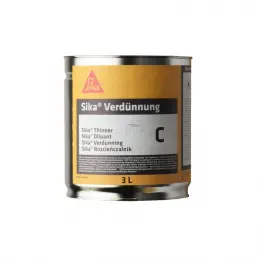
Sika Thinner C
Sika Thinner C is a specially formulated blend of solvents designed to mix with its compatible Sika products to create an optimal consistancy for application whether it be for brush, roller or spray. It can also be used for the cleaning of some surfaces prior to application of the coating and/or cleaning of the application tools such as...
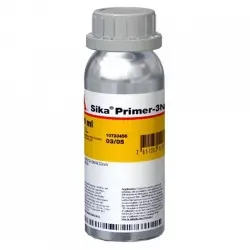
Sika Primer 3N
Sika Primer 3N is a universal, one component, solvent primer based on epoxy-polyurethane which should be used on porous substrates prior to the application of Sikabond Adhesives.Universal Primer Evaporates quickly Easy to apply
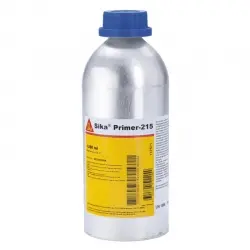
Sika Primer 215
Sika Primer 215 is a low viscosity primer that should be used to prime various plastics, timber and other porous materials prior to bonding with Sikaflex products. Because plastics vary so much in their chemical composition, preliminary trials are necessary. It is manufactured in accordance with ISO 9001 / 14001 quality assurance system and...
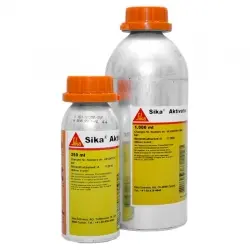
Sika Aktivator 205 (Cleaner 205)
Sika Aktivator 205 (previously know as Sikka Cleaner 205), an alcoholic solution containing a bond activating substance for cleaning and activating bond faces, prior to bonding and sealing with Sikaflex products. Features and BenefitsFor Professional use Pre-treatment agent for non porous substrates Metals, plastics, glazed ceramics,...
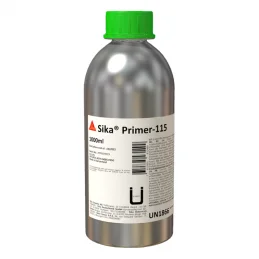
Sika Primer 115
Sika Primer 115 is a 1-part transparent reactive PU based primer. Used as a pre-treatment on porous substrates before Sikaflex applications.Easy to apply Clear finish Short flash-off time Used as a primer for the following substrates:Concrete and cementitious substrates Brick masonry Cut asphalt (according to EN 13108-1 and EN...


